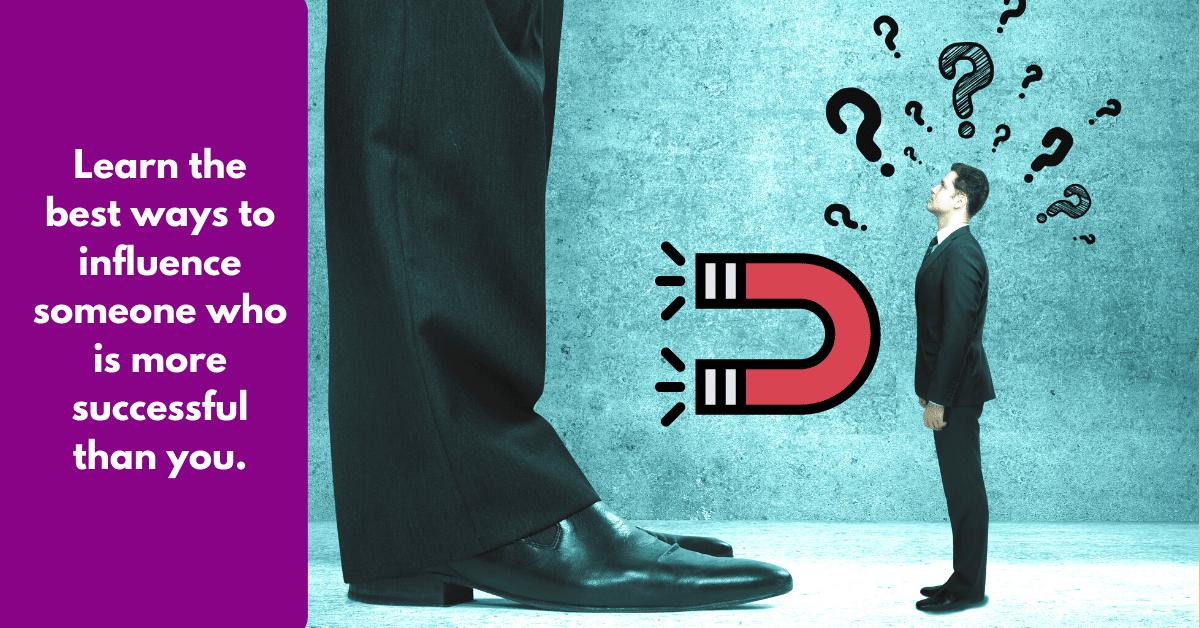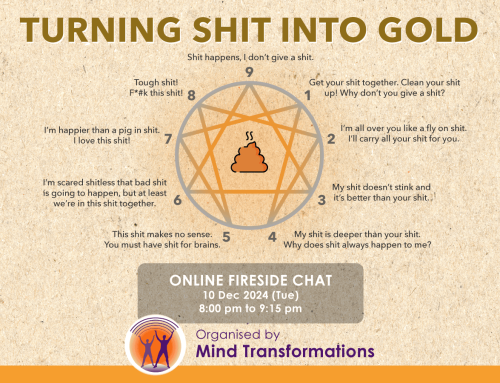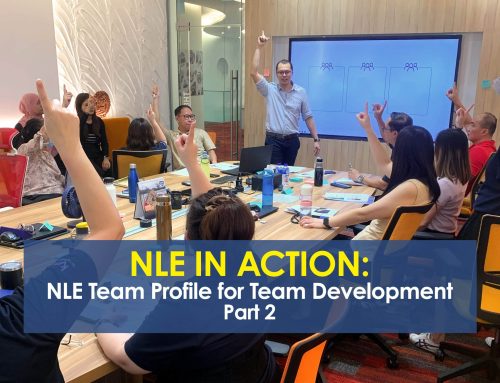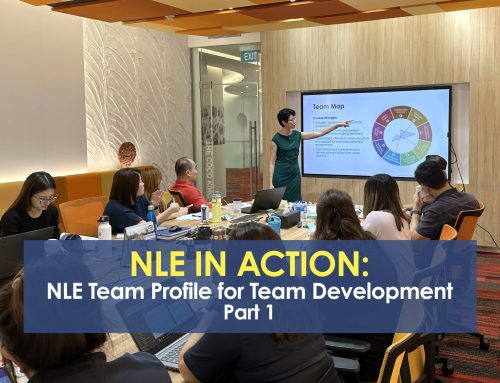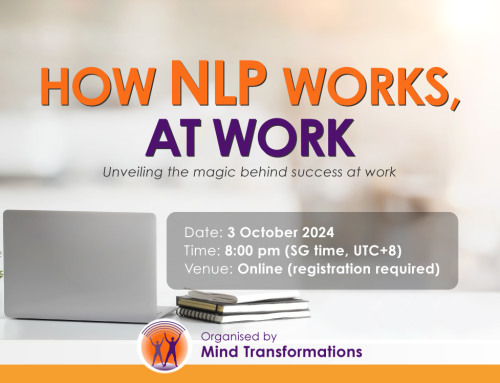Achieving success is not only doing what you are capable of. It's also about being able to influence and lead people who are more successful than you. Getting a strong buy-in from someone who has a higher position in society or a better reputation than you can be difficult but if done correctly, it will pay off in dividends.
This guide covers the framework that you can adopt if you are looking to:
The psychology behind people who are more successful than you.
One reason influence and leadership is more difficult when you are speaking to someone who has a higher status than you (or is simply better at what they do) is because they see themselves as less vulnerable to influence. Human beings will always try to preserve their status and influence in any social & professional setting. They choose which ideas or people they want to listen to based on their position and standing, not really on genuine alignment with your ideas or influence.
In order for them to be in alignment with what you say, it's vital that you make them feel like they are still in control of the situation; that they feel like it is in their best interests to listen to what you have to say.
So what is the world they are keen to create and control?
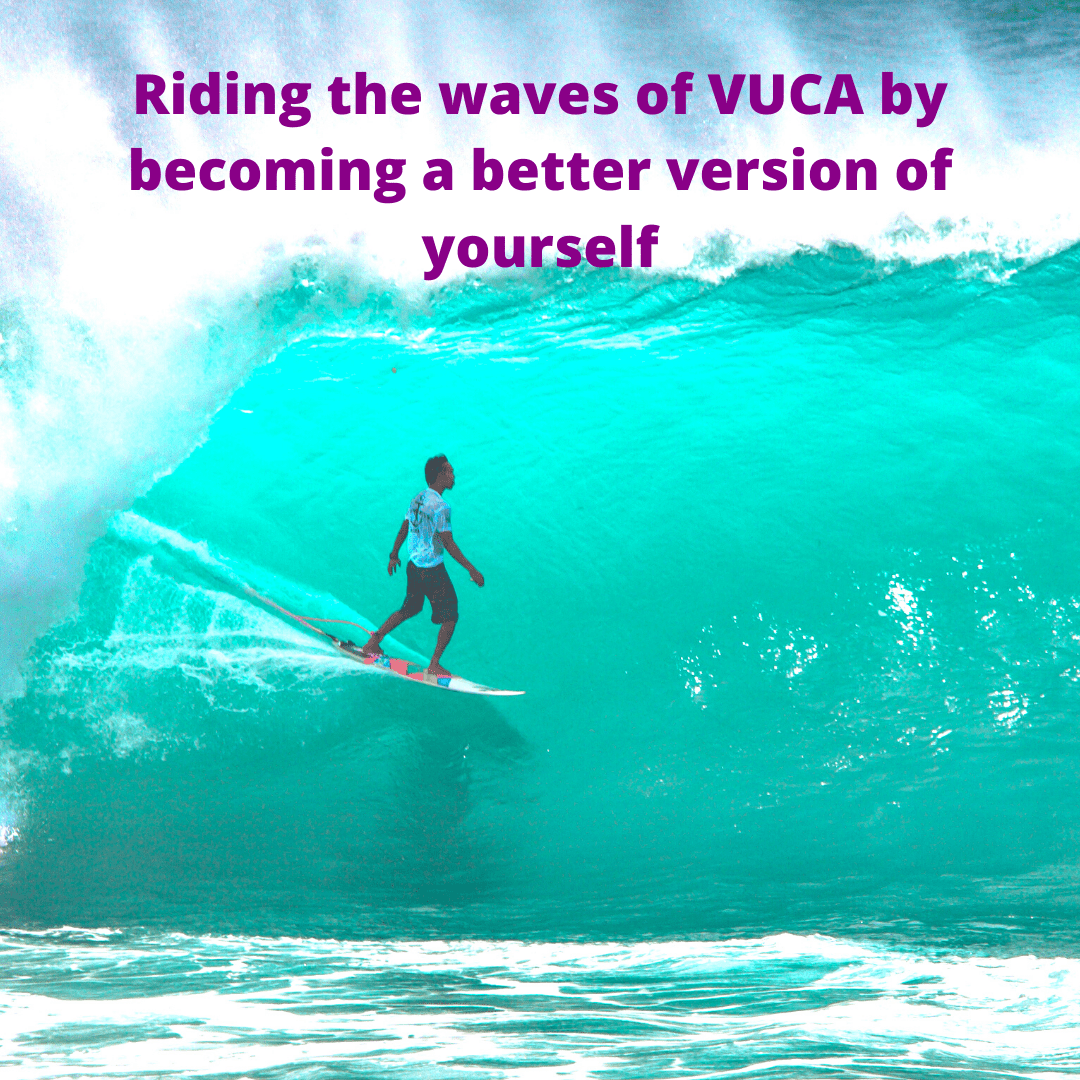
In this volatile, uncertain, complex and ambiguous world we are in, no matter where they are in terms of their expertise, experience, status or success, they are striving to play a bigger game. They are seeking to deliver value for increasing demands under rising constraints and limitations. Which means, it is a natural progression for them to level up and work towards their next breakthrough.
From this perspective, they are not looking for people who just sell them solutions or tell them what they should do, but someone who is committed to play a bigger game with them. They are looking for someone who is not solely based on their skills, solutions or capabilities, which are a dime a dozen. Rather, they want someone who shows a high level of self-development, maturity, personality and resourcefulness who can inspire or even show them the path to growth.
Now the question is, are you that person who has what it takes to lead them forward to where they want to be?
7 coaching lessons to develop a deep human presence to lead and influence beyond tactics and techniques.
Your boss has rejected your idea again. Or, you are in a heated negotiation and the other party keeps rejecting your offer. Yet you want to lead them towards your way of thinking, but they just won't budge despite all the persuasive communication tactics or strategies you have used on them.
A lot of persuasion tactics or techniques will not easily persuade people who are more experienced than you, such as asking questions, making arguments, giving advice, offering solutions to problems, etc. These people will resist any attempt at being influenced by these methods because it's only a tactic or technique for influencing others. They know this!
If you really want to influence someone else beyond mere persuasive communication tactics and strategies, then there is no better way than raising your deep human presence so that they see through what kind of person you truly are inside - which goes far beyond superficial things like how charismatic you are, how eloquent you are or how smart you are!
Here are 7 coaching lessons which you can adopt to raise your deep human presence to lead and influence people who are more successful or experienced than you. You can then connect with them on a deeper level and have them feel compelled to follow your lead without being persuaded by any tactic or technique.
1) From Questioning to prove your point and worth to Questioning to open up new options and angles.
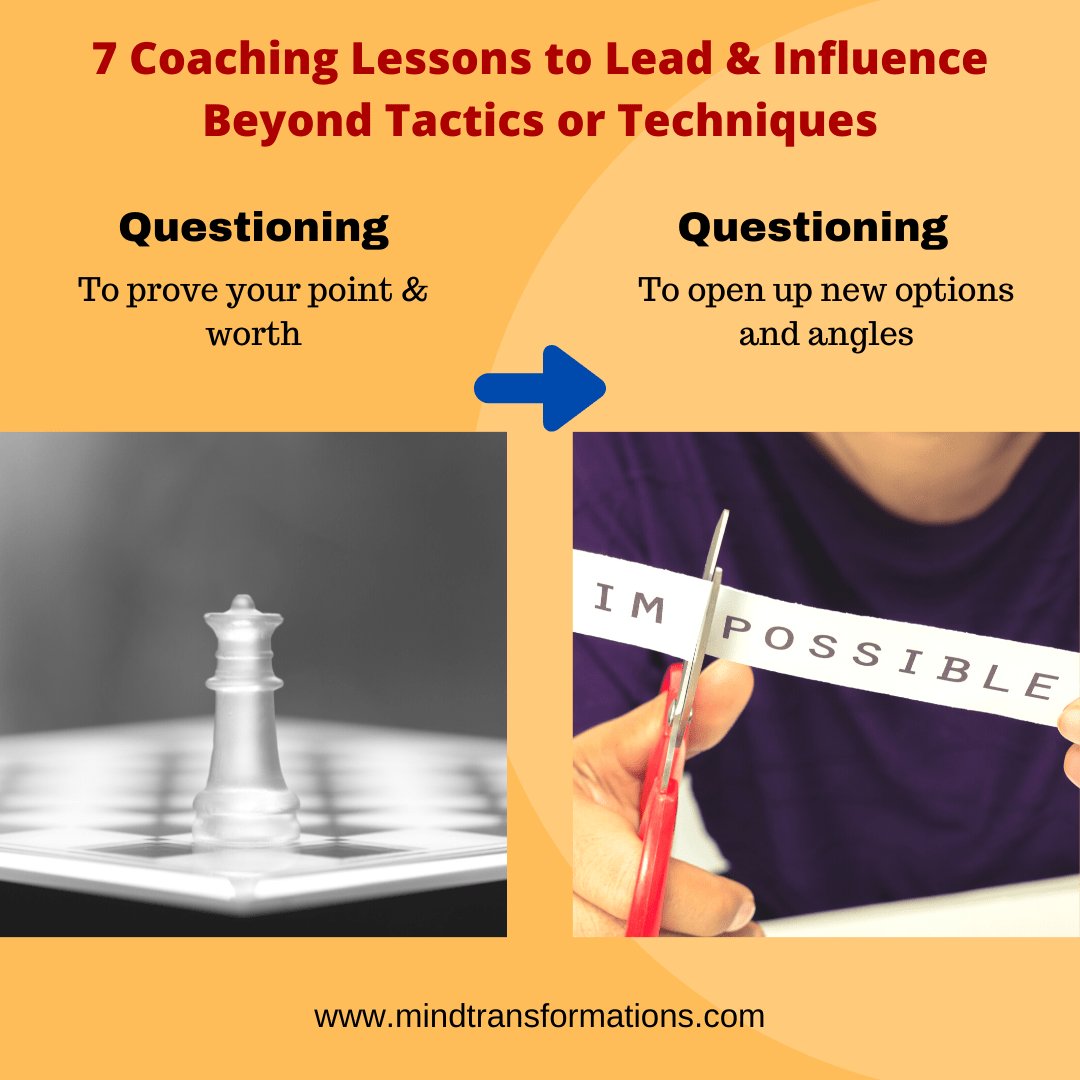
Many of us tried to use intelligent questions intending to prove our point and value. It then leads one to a phase of problem-solving with premature solutions.
Usually, we do it purely based on the belief that they don't know enough about what we think or feel. It's a tactic; not from where they're coming from and beyond how they think, live and feel!
In order to lead them forward, you must influence them beyond these tactics! This requires you to tap into their heart and psyche at the level of the human condition - which goes beyond mere practicalities or ideals.
From this deeper coaching perspective, we can ask questions from where they're coming from, why they think or feel that way, what's important to them etc. To influence others at a deep level, we must raise our human presence so that people see us as people who understand not only what they say but also how they feel when talking about it! That is powerful! And in order to do so, you must demonstrate to them congruently that you are truly understanding them; not only their voices but also their hearts.
From there, you then open up more possibilities and angles which they have not explored or considered that are of high value or usefulness to them.
2) From Certainty of "I know and I understand..." to Curiosity of " Help me to understand."
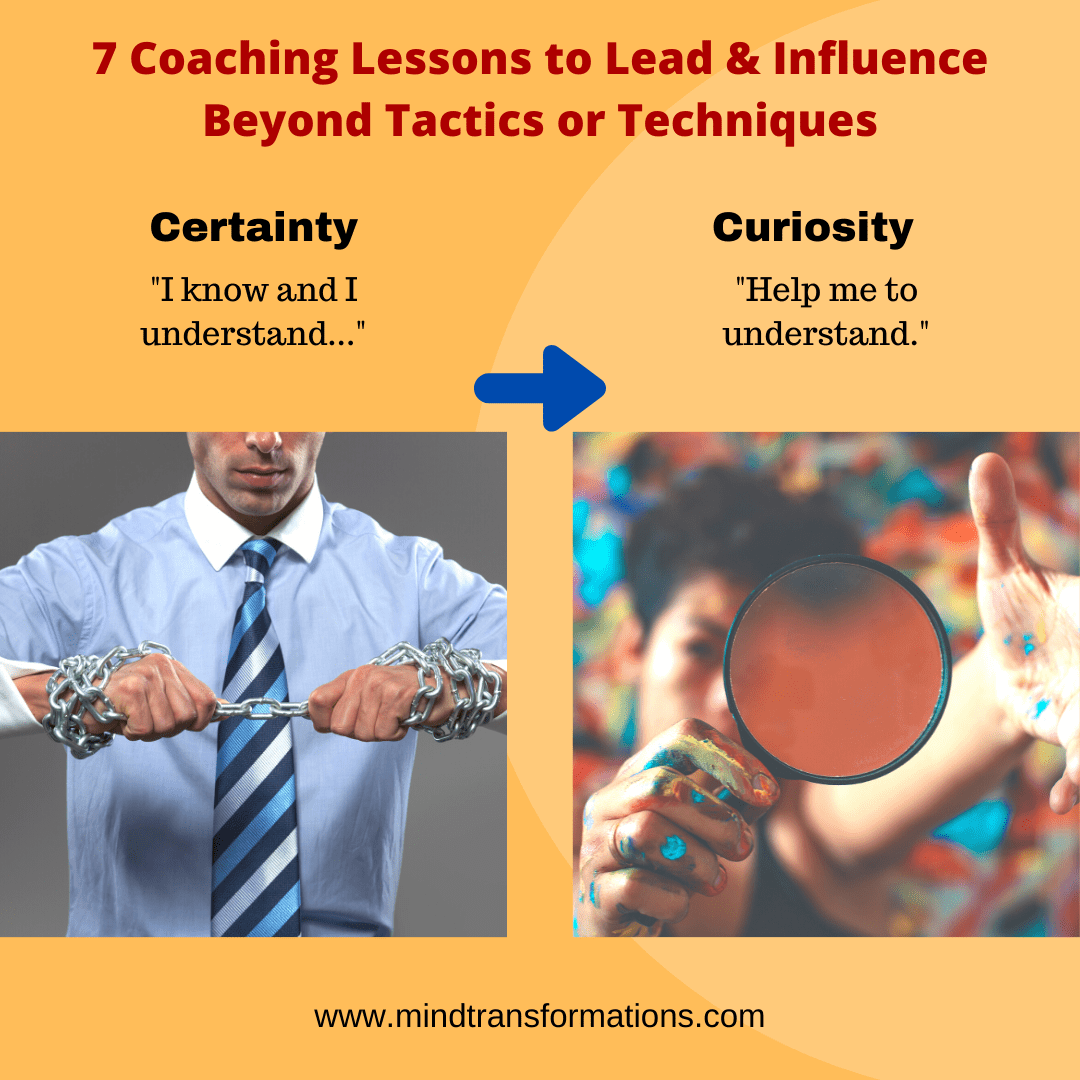
Most people communicate out of certainty. That is where most persuasive communication tactics or strategies are used. Their efforts aren't to influence others but to convince others that their point of view or even solution is better than the other person's!
This approach doesn't create effective change; instead, it only gets others to become more defensive and reject any attempts you may have on them because they don't feel nor see value in what you're offering - even though it's a very good one!
Instead, adopt a coaching approach of being curious about how they think or feel about your idea regardless if it has worth for you or not. This will open up possibilities for new angles which may be very useful to them and lead towards playing a bigger game.
3) From Blaming "It's their problem or fault..." to Ownership "What's my role in this?"
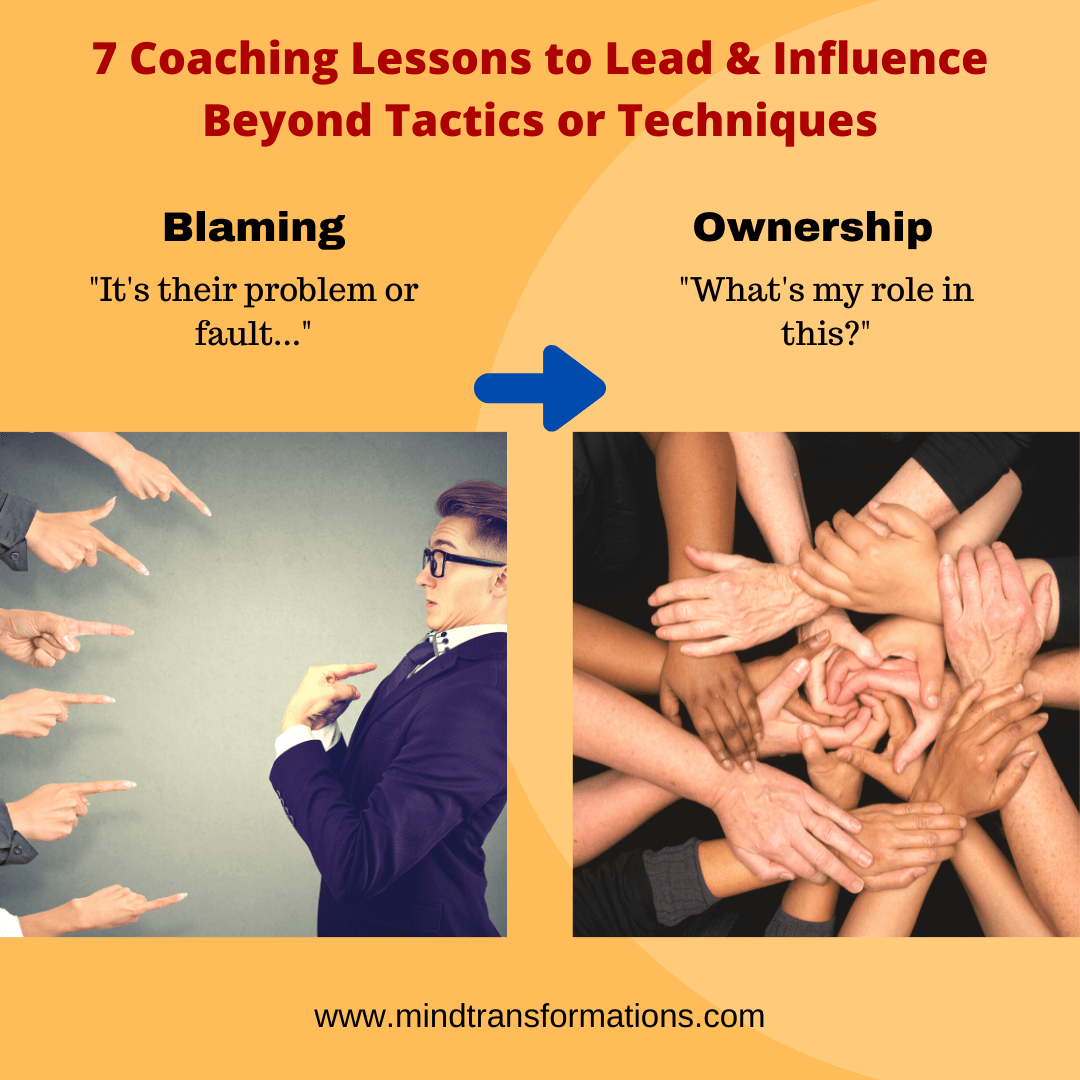
As a communicator, manager, leader or coach, what is your level of ownership that you display through your thinking, words, gestures and emotional patterns? When we see that our lack or challenges as coming from the faults of others, the circumstances, the environment or lack of resources, it is hard to get the buy-in from others.
Be honest with yourself and ask: "What's my role in this?" If you really want to get the agreement or support from others, then realize that you need to own your part in the problem or issue at hand; not blame it all on external factors! The more we can admit our mistakes openly and honestly without judging ourselves, the more effective we can facilitate change.
4) From Covering the important things to Uncovering points of alignment for mutual understanding.
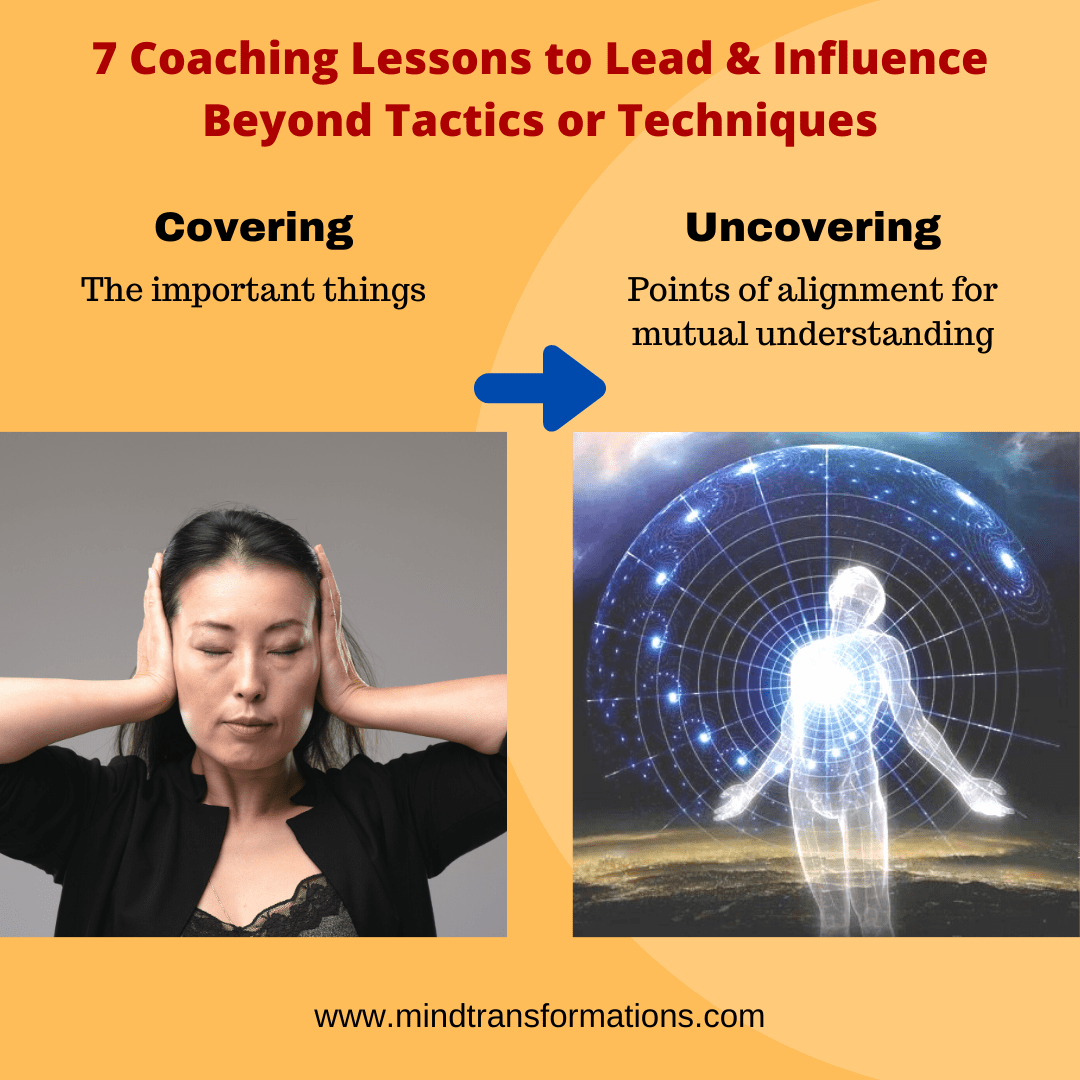
The most important element in guiding, coaching, leading or influencing others is to create an environment where all the parties involved can co-create and have mutual understanding. It is a shift of paradigm from "what's in it for me?" to "What's in it for us?" Otherwise, it will remain a possibility that others may not even be willing to hear what's on your mind as you talk away at great lengths about yourself or trying so hard to talk people into doing something or accepting our points of view!
To better enable co-creation, first we need to sharpen our abilities to observe the nuances in people and their differences. Then, learning to speak the language in people's minds such that it resonates deeply with them.
We must first build a strong level of trust which doesn't come from manipulations but from powerful selfless gestures that show people how much you care. It is also in expressing your capacity to adapt and work with differences or diversity in people that conveys your unfair advantage.
And lastly, to uncover the common values that surface from the various parties involved.
It is quite common to hear people say: "I was in a meeting where someone asked me questions about my point of view and I did not know what they were talking about." Or "I was in a meeting where my colleague said that I had something to contribute but no one asked me anything."
When your engagement depends on a particular skill set, the influence, leading or coaching game can be lost because people's first thought is to cover all the important things. And influential communication, like any other game, can be lost when you give no thought to points of alignment.
In order to communicate effectively, you must carefully consider what all parties have in common or can be aligned with. It's a good way to get people on board and steer them towards the future that we are trying to create together.
5) From Being defensive "I don't want to do this." to Gracious invitation "How about this?"
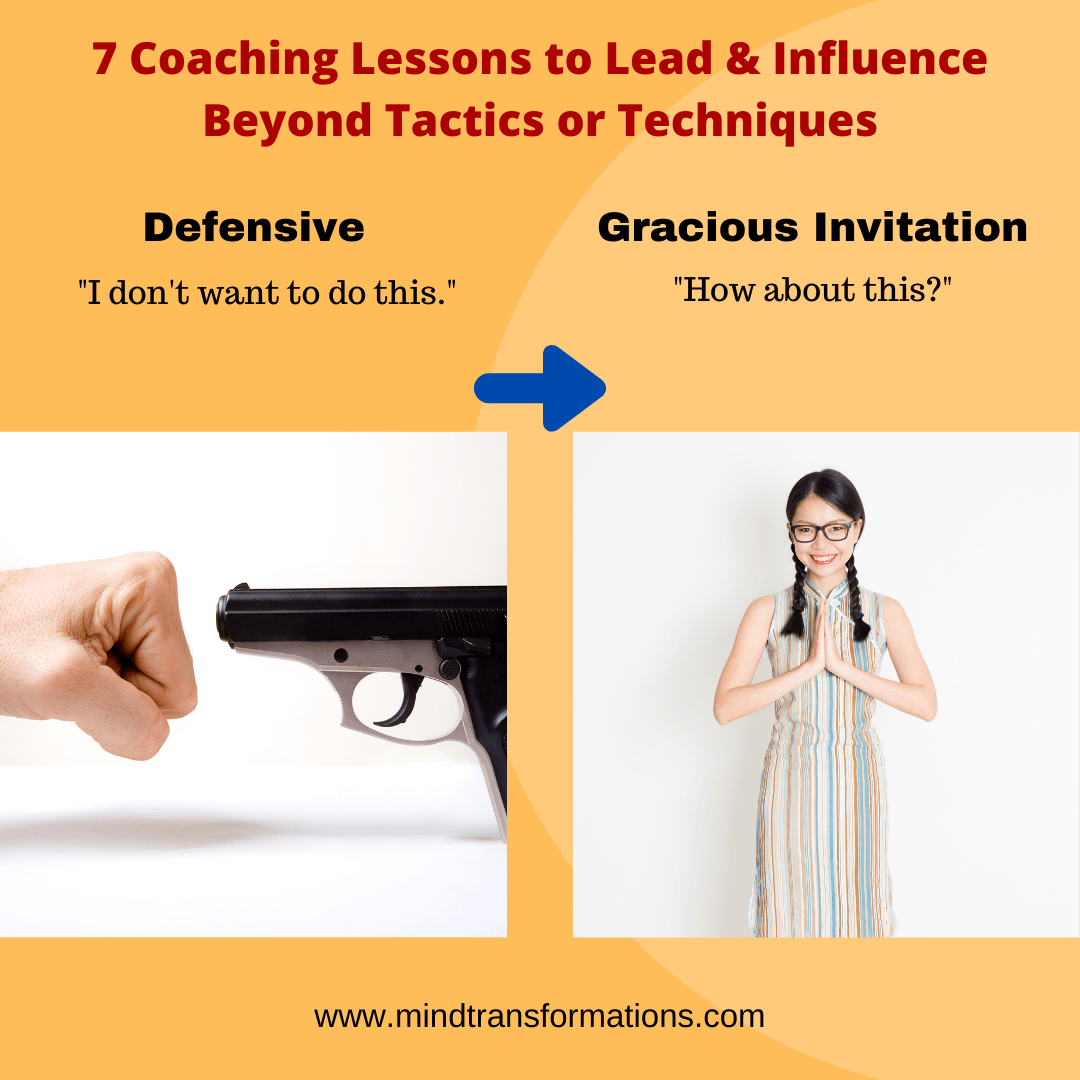
Unfortunately, when we are being told that there is something wrong or someone is criticizing us directly, most of the time people reacts defensively. You'll get this while trying to influence, lead or coach people who are more experienced or successful than you.
Never tell people what they should do! It is always better to ask them "What do you think?" and then lead them, influence or coach them by inviting them to take progressive steps to build momentum.
People just like you and I are much more open to influence if we remain gracious and ask them simply "What do you think?" or "How would you like to solve the problem?" rather than telling them what they should be doing. But when people take offense, try to be proactive and be flexible to change instead of being reactive. Ask for their point of view or reasons why they may feel that way. By doing this, people are more likely to shift their thinking and respond actively to your suggestions or invitations.
Getting the results through people or key stakeholders is not about telling people what they should do but asking for small actions with curiosity and grace that leads towards bigger changes. Remember this!
6) From Being in your own way to Uncovering hidden assumptions.
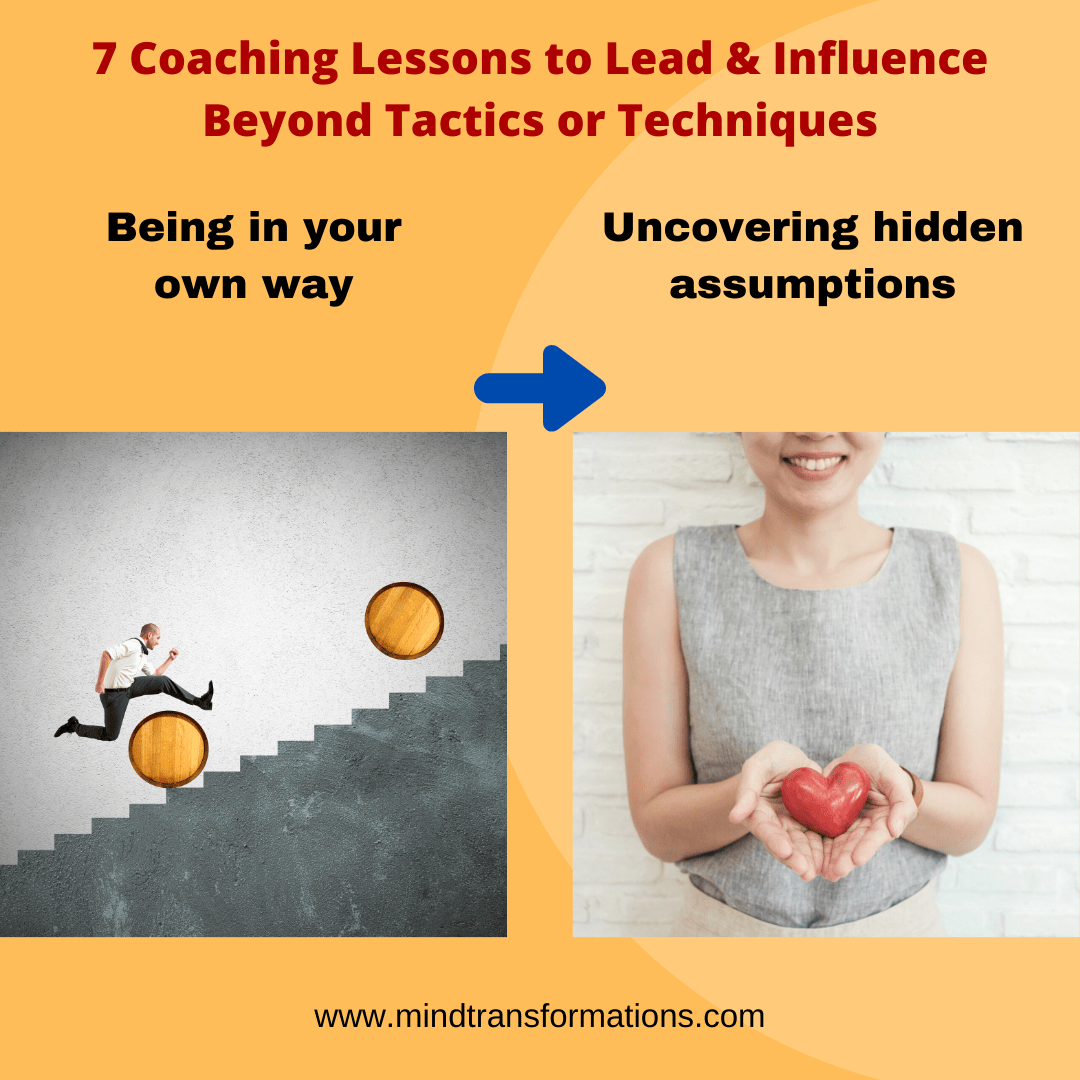
Peter Drucker once said that "the most important thing in communication is hearing what isn't being said ." And for this reason alone, we should strive to uncover hidden assumptions or deeply held beliefs that drive people's behavior and decisions.
It is quite common for people to make assumptions about each other based on their limited experience or knowledge about the other person, who they are or what profession they hold. It is this gap of information that may influence how we treat others, which in turn influence how others feel, react and respond negatively or positively.
Appreciation of diversity is not just about respecting people for who they are but understanding the influence that our assumptions may have on them or how they influence their perceptions and feelings towards us. In order to influence (lead or coach) with a slight edge, we need to stop taking things personally and place greater emphasis on what people do rather than what we think they should do. Then influence, lead or coach people by skillfully addressing those hidden assumptions.
7) From Masking your own thoughts and say what the other person wants to hear to Honest & Truthful feedback on what is going on here.
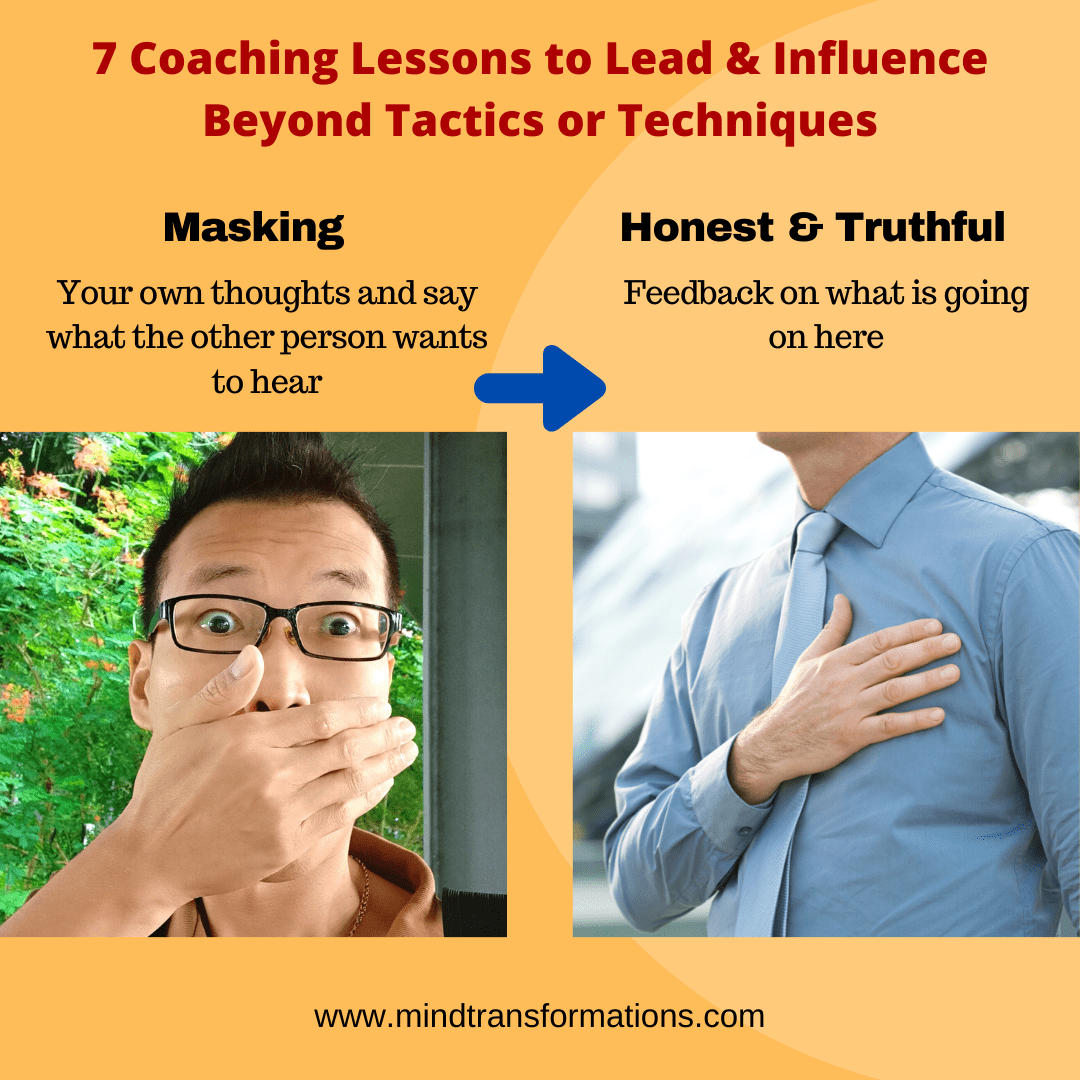
When you influence, lead or coach people to get things done, you must be careful to not always give in to whatever they want or what they like to hear. This is especially true when the request is unreasonable or has a potential for causing problems to others.
It's important to encourage more independent thinking and critical awareness of what works and what doesn't in order to influence (lead or coach) people with a slight edge. However, this does not mean that you turn into a political animal who will say whatever it takes to get people on board and asking them to support your idea even when they disagree with you or don't like what they are hearing. This is not leadership but manipulation. To communicate with integrity requires earning the respect of others through honesty and truthfulness without putting others down.
To do so, first, be clear of your positive intentions. Then set yourself to be congruent with your feelings and your non-verbal message to convey the message of honesty and integrity with your gestures, postures, behaviours and tonality.
As you influence, lead or coach people in accordance with the 7 coaching strategies for those who are more successful and experienced than you, keep this article in mind as a guide to tailor your communication by treating your audience as a whole person and a dynamic human being.
Transformational communication isn't about what you do or say, but how you deliver and show up.
Learn how to become a whole person by developing yourself as an individual through Multi-Intelligence training. Transformational communication isn't about what you say or do, but rather who you are at your core and how well developed you are as a human being. By expanding your Multi-Intelligence capacity as a whole person, you can learn to show up fully for others without fear of judgment or rejection. This allows you to build stronger intrapersonal and interpersonal relationship which increases productivity, effective results with people while also making work & life purposeful & fulfilling!

